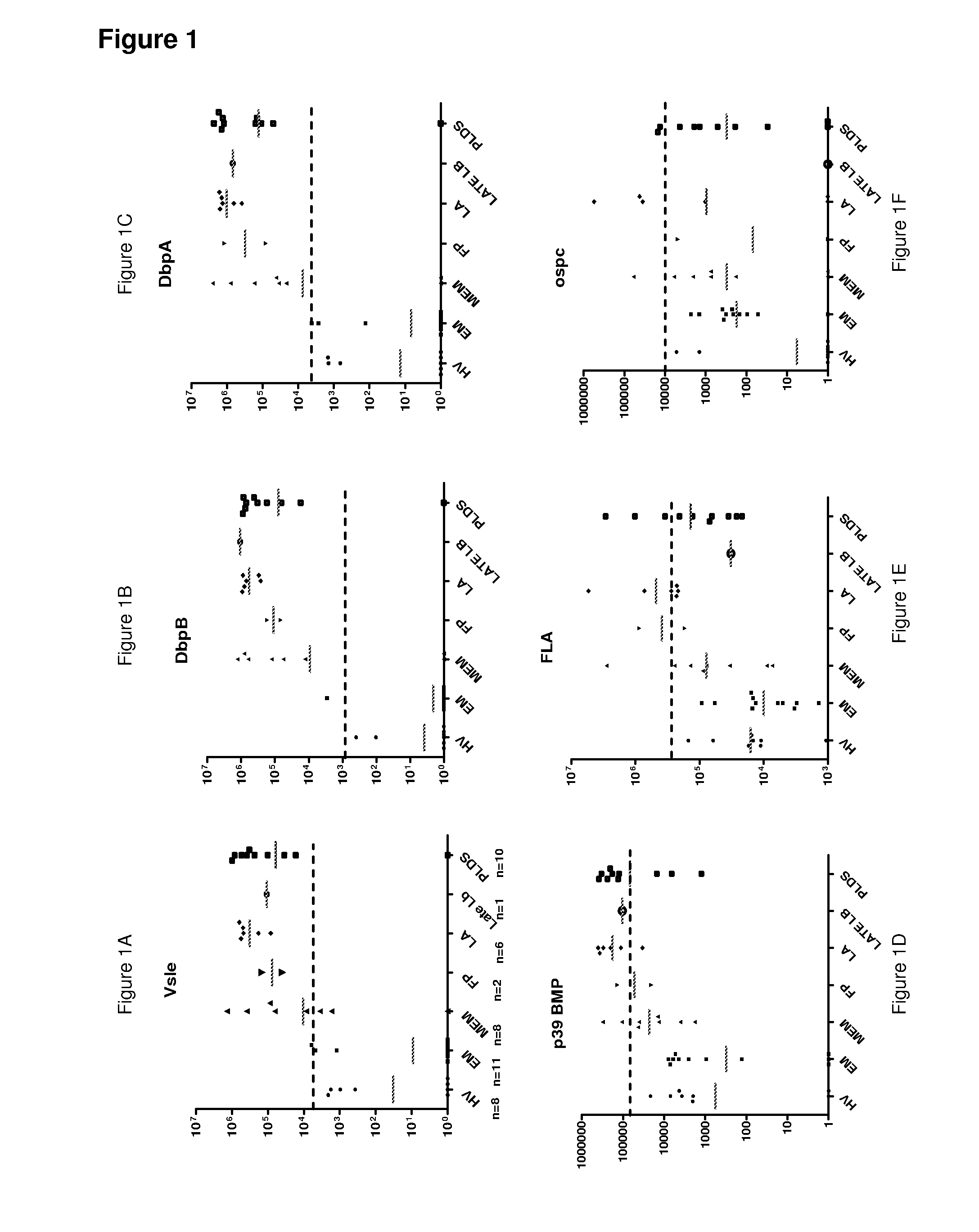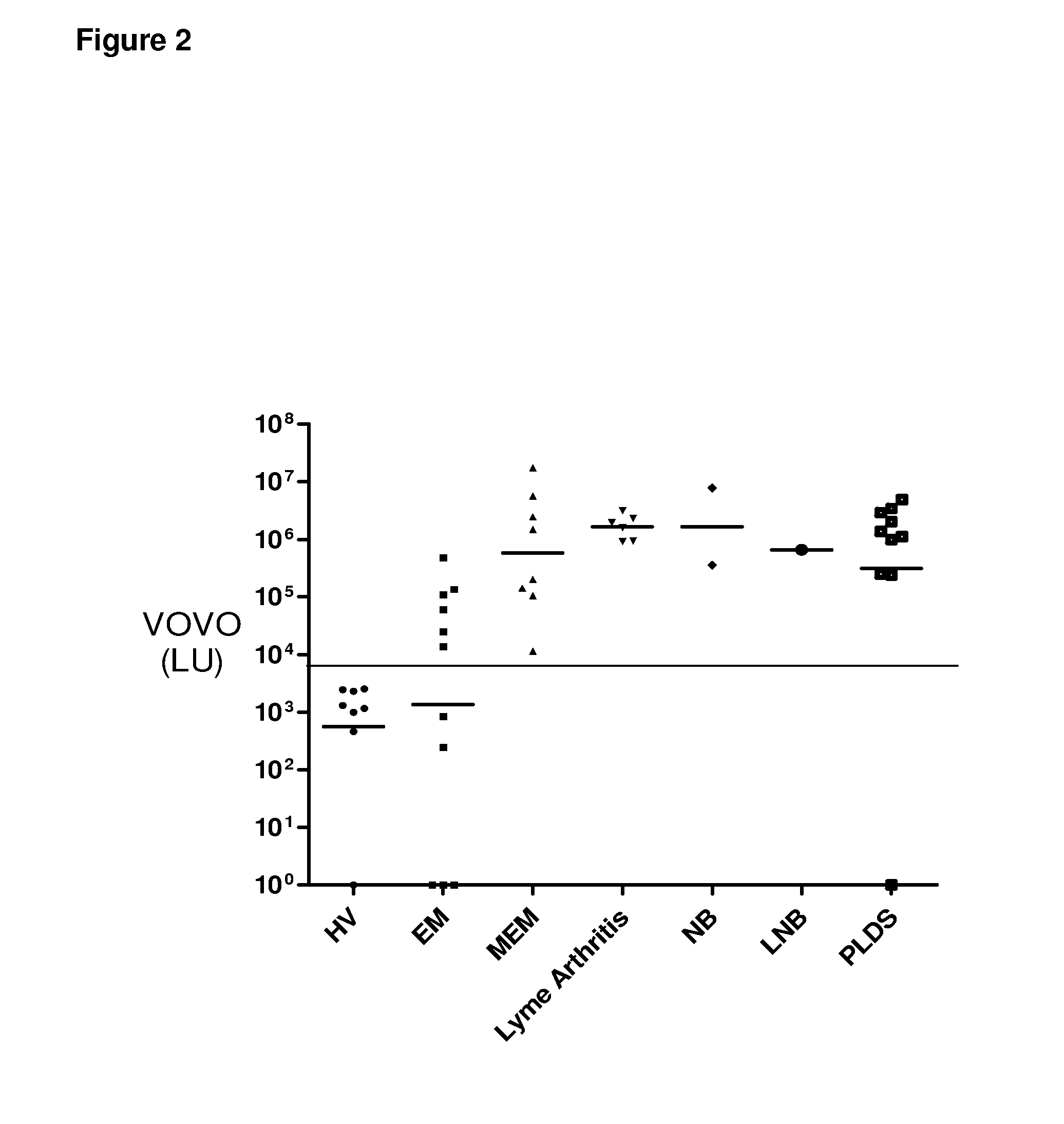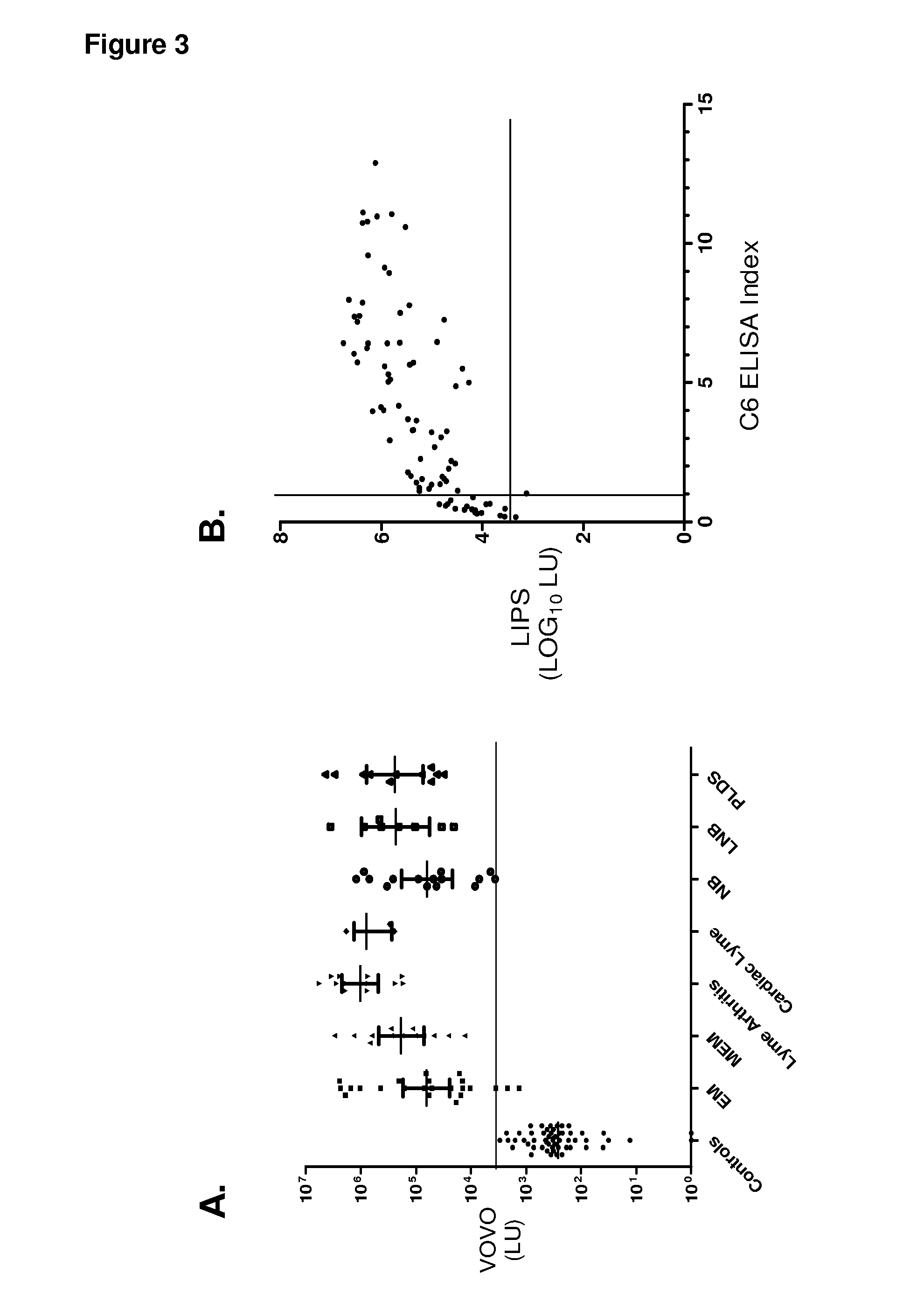Compositions and methods for screening for lyme disease
a technology of lyme disease and compositions, applied in the direction of instruments, peptides/protein ingredients, peptides, etc., can solve the problems of rheumatism, cardiac damage over time, neurological damage,
- Summary
- Abstract
- Description
- Claims
- Application Information
AI Technical Summary
Benefits of technology
Problems solved by technology
Method used
Image
Examples
example 1
Material and Methods
[0088]Patient Sera.
[0089]Serum was obtained from patients or volunteers under institutional review board approved protocols at the Clinical Center, National Institute of Allergy and Infectious Diseases, NIH. The initial training set (n=46) included serum from 11 EM, 8 multiple erythema migrans (MEM), 2 Lyme palsy, 6 Lyme arthritis, 1 late Lyme neuroborreliosis, 10 post-Lyme disease syndrome (PLDS) subject samples, and 8 uninfected control sera subject samples were analyzed. Testing of the validation set consisted of 225 coded serum samples. This validation cohort consisted of 59 control sera and 141 samples from patients with established Lyme disease. The codes for the validation cohort was broken only after titers were established and categorization of Lyme infection status had been made. The antibody titer results for the validation cohort obtained by LIPS was also compared with the C6 ELISA. Of note, an additional 40 samples with uncertain diagnosis for Lyme d...
example 2
LIPS Detection of Antibody Responses to a Panel of Bb Antigens
[0096]Previous studies from various laboratories have identified a large number of Bb antigens useful for serological screening of Lyme disease. Fifteen different Bb antigens including FlaB, BMP, Dbp-A, DbpB, OspC, OspA, Bbk and 2 different VlsE constructs were initially synthetically assembled and constructed as C-terminal fusion with Ruc. LIPS evaluation of these different antigens began by testing a small cohort of serum samples (n=44) consisting of serum from 11 EM, 8 MEM, 2 Lyme palsy, 6 Lyme arthritis, 1 late Lyme neuroborreliosis, 10 PLDS subjects, and 8 uninfected control subject serum samples. To easily visualize the differing immunoreactivity to this large antigen panel, we employed our previously described heat map analysis to graphically display the antibody responses using a login scale to the most informative antigens (FIG. 1A). From these tests, 6 of these Bb proteins showed weak or non-existent antibody si...
example 3
Using VOVO with a New Independent Validation Cohort
[0098]To test the effectiveness of VOVO and compare it with the C6 ELISA, a new validation cohort of 225 blinded sera were evaluated. Following breaking the code, the LIPS antibody titer data were analyzed. Similar to the training set, the mean anti-VOVO antibody titer in the 141 Lyme samples was 589,200 LU and was markedly higher than antibody titer of 537 LU in the 59 controls (Mann Whitney U test, P10 transformed LIPS values with the C6 ELISA values showed that both assays tracked each other (rs=0.82, p<0.00001).
PUM
| Property | Measurement | Unit |
|---|---|---|
| nucleic acid | aaaaa | aaaaa |
| antibody titers | aaaaa | aaaaa |
| lengths | aaaaa | aaaaa |
Abstract
Description
Claims
Application Information
 Login to View More
Login to View More - R&D
- Intellectual Property
- Life Sciences
- Materials
- Tech Scout
- Unparalleled Data Quality
- Higher Quality Content
- 60% Fewer Hallucinations
Browse by: Latest US Patents, China's latest patents, Technical Efficacy Thesaurus, Application Domain, Technology Topic, Popular Technical Reports.
© 2025 PatSnap. All rights reserved.Legal|Privacy policy|Modern Slavery Act Transparency Statement|Sitemap|About US| Contact US: help@patsnap.com



